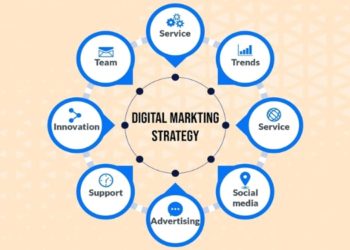In the rapidly evolving digital landscape, the shift to cloud computing is more than a trend; it’s a fundamental transition reshaping how businesses operate. Cloud migration, moving data, applications, and other business elements to a cloud environment, offers numerous benefits, including scalability, flexibility, and cost-efficiency. However, navigating this transition can be complex and daunting. This article aims to outline key strategies for successful cloud migration, ensuring businesses can leverage the full potential of cloud technology.
Understanding Your Needs and Goals
The first step in any successful cloud migration journey involves thoroughly understanding your business’s specific needs and objectives. Each organization has unique requirements, and what works for one may not suit another. Establishing clear goals, whether it’s enhancing data accessibility, improving collaboration, or scaling operations, is crucial. It’s here that consulting services, like those provided by DoiT, can offer invaluable guidance, helping businesses align their cloud migration strategy with their overall business objectives.
Choosing the Right Cloud Environment
Not all cloud environments are created equal; selecting the right one is pivotal. Options range from public clouds, managed by third-party providers, to private clouds, tailored for individual business use, and hybrid models that combine both. The choice depends on several factors, including the nature of the data being migrated, compliance requirements, and budget constraints. Consulting experts who stay abreast of the latest developments and offerings in cloud technology can provide insights that help make an informed decision.
Developing a Comprehensive Migration Plan
A well-structured migration plan is the backbone of a successful cloud migration. This plan should encompass a detailed assessment of your IT infrastructure, a roadmap for migration, and a clear execution strategy. Identifying which applications and workloads will move to the cloud and in what order is essential. A phased approach, starting with less critical systems, can mitigate risks and allow adjustments based on early experiences.
In addition to identifying applications and workloads, evaluating the compatibility of existing software and hardware with cloud environments is crucial. Some legacy systems may require updates or replacements to function optimally in the cloud. This evaluation helps in avoiding unexpected disruptions during the migration process.
Another key aspect of the migration plan is the timeline. They are establishing a realistic timeline that factors in all stages of migration, from planning and testing to execution and post-migration review, is vital. This timeline should also include buffer periods for unforeseen issues and adjustments.
Ensuring Data Security and Compliance
Data security and regulatory compliance are paramount in cloud migration. Understanding the shared responsibility model in cloud computing, where security obligations are divided between the cloud provider and the client, is crucial. Businesses must ensure their cloud strategy meets industry-specific compliance standards and data protection regulations. This area is where professional consulting services can provide significant assistance, helping navigate the complex landscape of compliance and data security.
In the realm of data security, encryption is a key strategy. Encrypting data both in transit and at rest helps in safeguarding sensitive information. Additionally, implementing robust access controls and identity management ensures that only authorized personnel can access cloud-based resources.
Regular security audits and vulnerability assessments are also critical. These assessments help identify potential security gaps and allow businesses to address them proactively. Incorporating best practices for cybersecurity, such as regular software updates and multi-factor authentication, further strengthens the security posture.
Skill Development and Change Management
The shift to the cloud often requires new skills and a change in the organizational mindset. Investing in training and development ensures your team knows how to manage and optimize cloud-based resources. Additionally, addressing the human aspect of change management is critical. Engaging with your workforce, communicating the benefits of the transition, and addressing concerns can facilitate a smoother migration process.
Leveraging Professional Expertise
While internal teams possess valuable insights into their business processes, the complexities of cloud migration often necessitate external expertise. Consulting firms offer tailored advice and strategic planning, helping businesses navigate the intricacies of cloud migration without directly implementing cloud technologies. These consultants act as strategic partners, offering expertise and insights that complement the internal team’s efforts.
Continuous Monitoring and Optimization
Cloud migration is not a one-time event but an ongoing process. Post-migration, continuous monitoring, and optimization are key to maximizing the benefits of the cloud. Regularly assessing cloud performance, costs, and security postures ensures that the cloud environment evolves in tandem with the changing needs of the business.
Conclusion
Successfully navigating cloud migration requires a strategic approach encompassing careful planning, skill development, and continuous optimization. It’s a journey that benefits significantly from professional consultancy and advice, ensuring that the transition is smooth and aligns with the broader business objectives. By following these key strategies, businesses can effectively harness the power of cloud computing, unlocking new levels of efficiency, scalability, and innovation.











































































